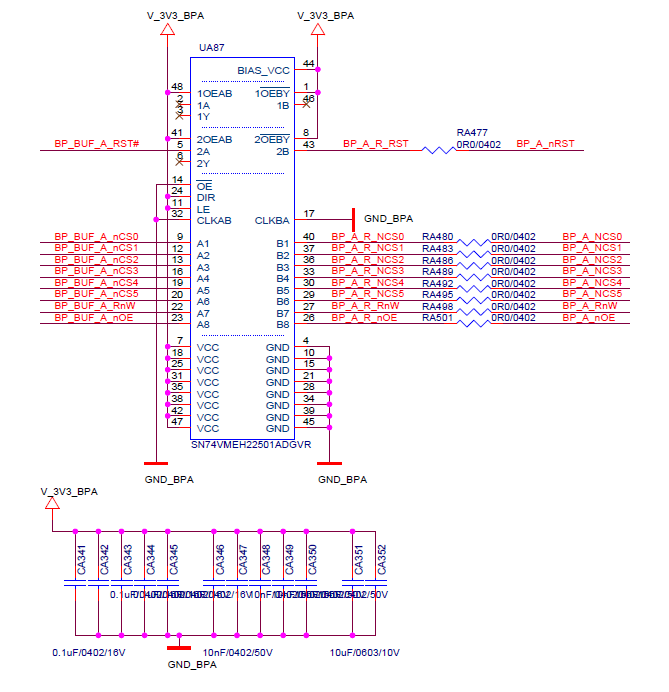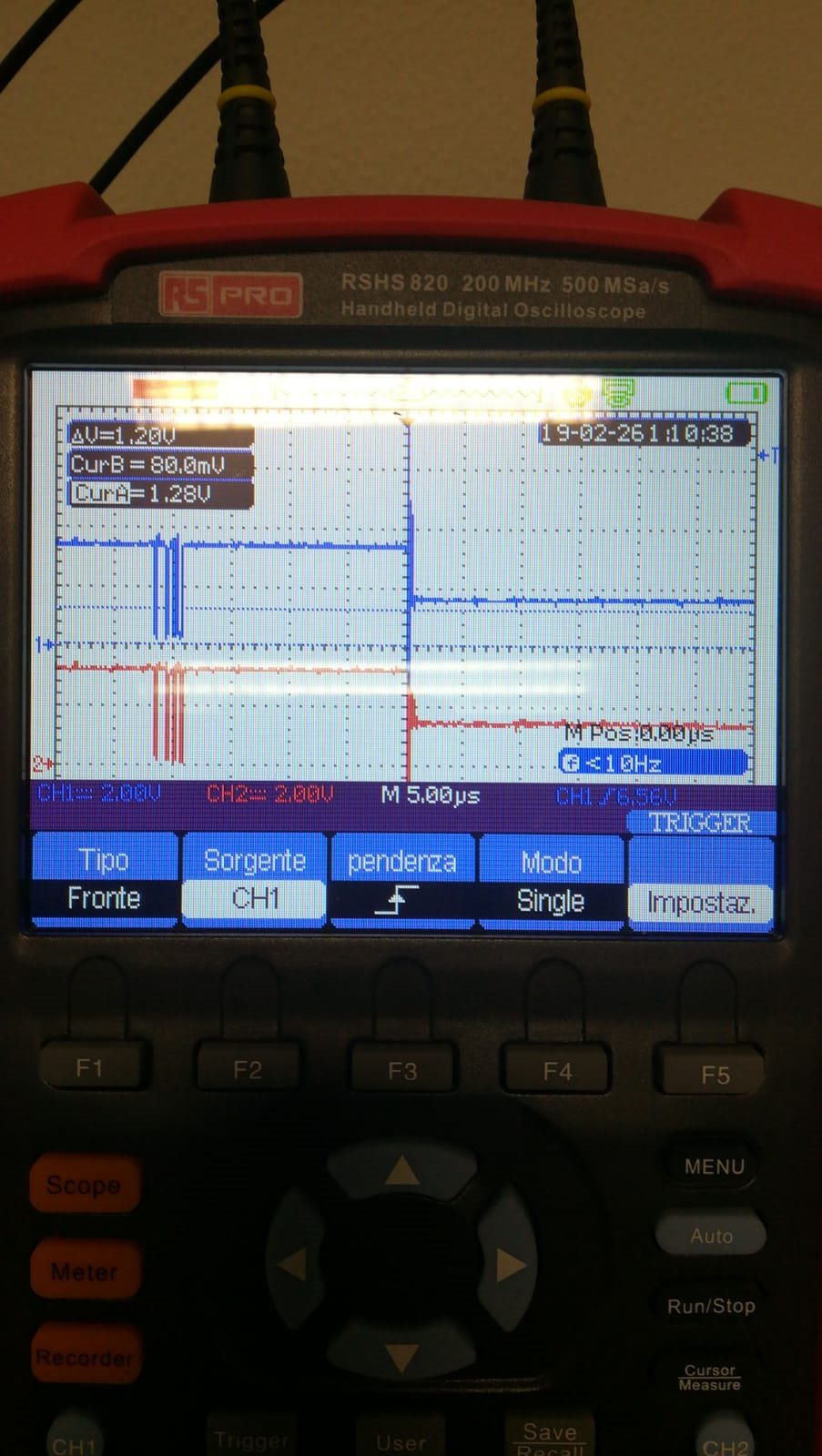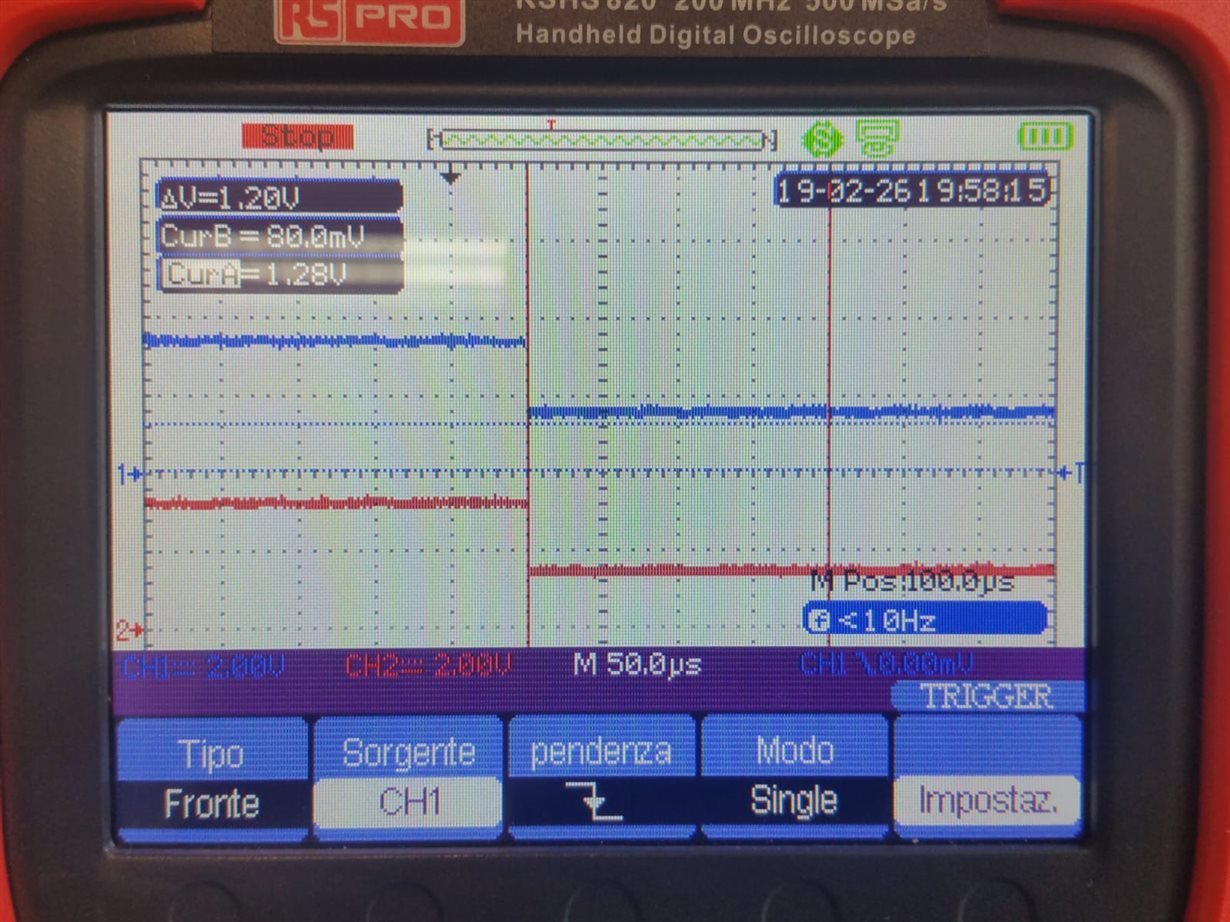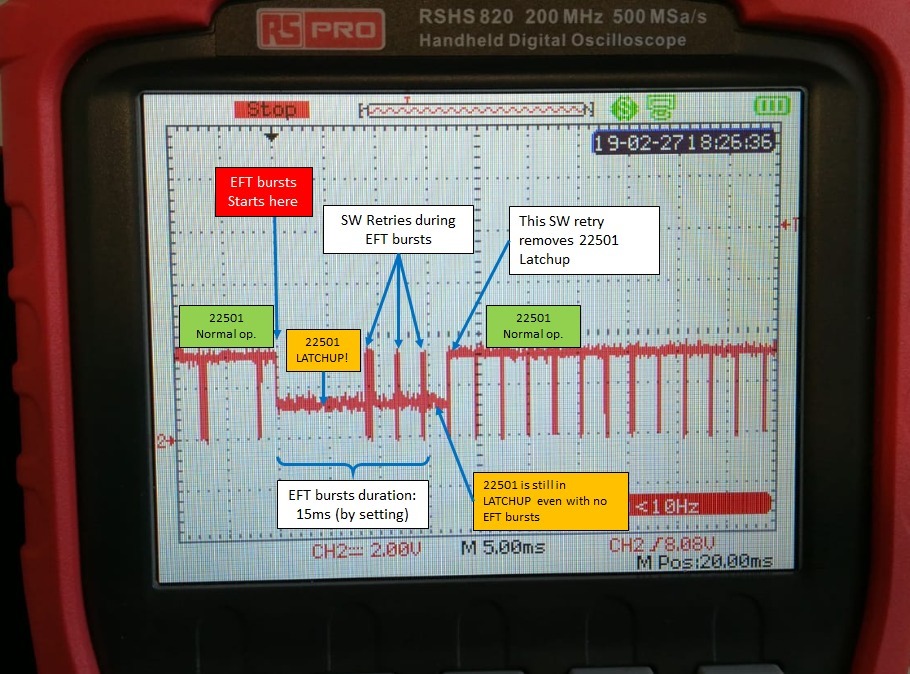Other Parts Discussed in Thread: SN74LVC245A, SN74LVC244A,
Hello Andrea again writing,
just to inform you that issue is not yet resolved.
Given the circuit below, i move signals BP_BUF_A_nCSx from an FPGA. The output on the left side has issue when i apply a EFT burst
Find attached the waveform taken on the output signals *CS and *RnW: after the burst the signal is steady at 1.5V, instead of 3.3V.
Please an urgent feedback is required; possibly an italian field application engineer is appreciated.
Many thanks
Andrea






